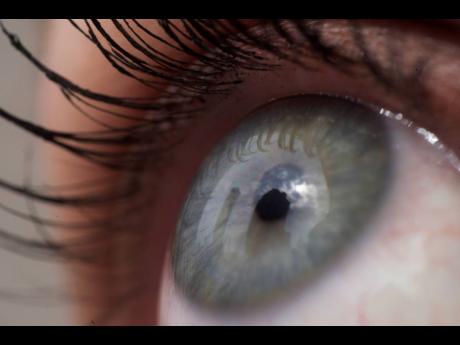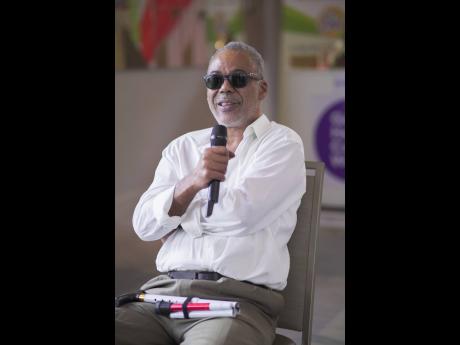Fantastic new technology for people with vision loss
Today’s technology not only makes life easier for everyone, but in the case of people with vision loss, it allows them to do even the simplest of things others might not have to think about. With modern technology, people with vision loss can do numerous things, such as write documents, browse the Internet, and send and receive emails.
Screen-reading software and special talking and Braille devices allow people with no vision to use computers, cell phones and other electronic devices independently. Similarly, people with low vision can use screen-magnification software and devices that will allow them to see letters, pictures and other objects without having to struggle or strain their remaining vision.
This technology, commonly known as assistive or adaptive technology, is continually evolving, and has removed many access barriers for people with vision loss.
Patrick Lafayette, veteran broadcaster and communications consultant, during his presentation at the fourth staging of the Medical Disposables’ annual Continuing Education Seminar for Pharmacists-MPowered 2023, shared that there are devices that take advantage of whatever vision the person has to try to get them to see better, and there are devices that try to use other senses because their vision sense is essentially gone.
“Sight-stealers can make navigating daily life more challenging, but a slew of fascinating technological innovations is able to help people with vision problems better perceive their environments and, therefore, live more independent lives,” Lafayette said.
Lafayette’s journey started at the age of 12 with an eye injury during a cricket game. Fearing further damage and in light of the ensuing eye trauma, his parents restricted his movement outside the home, even to the point of pulling him out of school. During this time, he became very acquainted with radio and filled his time calling in to radio programmes, winning competition after competition until the stations banned him from participating.
At the age of 16, a detached retina from a diving incident resulted in further vision loss. Local doctors operated, to no avail, and eight months later, a consultation with New York State Medical Centre doctors confirmed his devastating new reality: total vision loss. He now faced a choice between remaining in New York to do rehabilitation and returning to Jamaica, where he would have to start over as a blind person.
His parents made the difficult decision to let him stay in New York, where he was rehabilitated, earned his General Educational Diploma and completed a bachelor’s degree in communication arts. He returned to Jamaica in 1983 to intern with Radio Jamaica, an experience that would cast him into the role of industry game changer.
According to Lafayette, besides allowing people to carry out routine tasks at work and school, assistive technology enables people with visual impairments to be more independent at home.
“We can now read the mail, listen to audio books, get step-by-step walking directions to unfamiliar places, record important information and so much more with special standalone devices designed for people with no or low vision. There are also devices like talking watches, thermometers, scales, blood glucose and blood pressure monitors that help us live independent and healthy lives,” he said.
People with low vision can also benefit from devices that magnify objects. This equipment can help them take notes, read small print on electronic devices and watch television. In other words, simple tasks that might have previously required the assistance of a sighted person can easily be done completely independently by people with low or no vision.
“Cell phones and tablets have revolutionised the way people who are blind or visually impaired interact and use technology. Screen-reading and magnifying software – like that used in computers – allow us to use these devices independently. However, the unique aspect about cell phones and tablets is that they can serve many of the purposes for which standalone devices and software were previously developed, thanks to apps,” Lafayette said.
“Other apps, such as Be My Eyes, connect blind or visually impaired individuals with a sighted person, who will then assist them by describing things. To put it simply, the sighted person who can be located almost anywhere in the world can be a virtual pair of eyes for the blind individual,” he added.
Lafayette’s life has been a testimony to the fact that while it is understandably difficult to accept a disability at any age, the achievement of dreams and wonders awaits whoever will step out and go for it. He did this very thing at a young age by daring to see past his blindness, to develop and share his talent. He embraced the uniqueness of his perspective to blaze trails and used the resources available to change mindsets.
“Anything can happen to anyone at any time. I didn’t know that I would lose my vision, and it is not something that I was prepared for. But I became proactive, and I have been working to change the culture. I have met so many people that have given up on life because they became blind. But there is so much access to information out there, so people can learn how to navigate their situation and lead productive lives,” he said.
Lafayette has offered free classes through the Jamaica Society for the Blind, sharing the knowledge he has gained in advances in technology. In addition to his work instructing persons with visual impairment, he has been involved with the boards of numerous local organisations representing other disabilities, taught students with combined disabilities how to use computer apps at the Abilities Foundation in Kingston, and mentored people in the computer industry.
The MPowered theme for this year event was ‘Plan To Innovate – Conversations in Innovation’ and hosted more than 700 pharmacists over two days. Presenters also included Dr Kamali Carroll, embryologist and lab director at the Hugh Wynter Fertility Management Unit, and Dr Tonoya Toyloy-Borrows, chief executive officer and founder of LiveWell Pharmacy.
keisha.hill@gleanerjm.comSend feedback to kanhillcommunications@gmail.com


